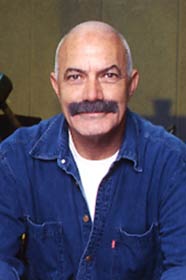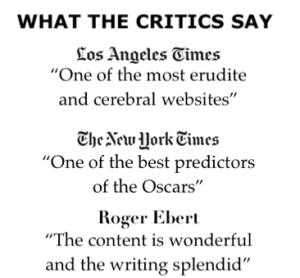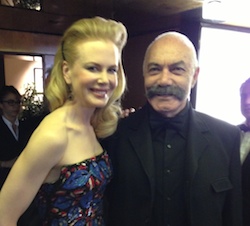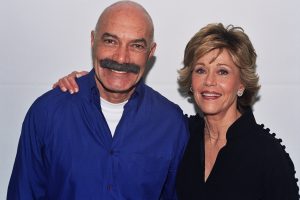"Metropolis," Fritz Lang's 1927 masterpiece, has been restored and will be released theatrically by Kino International before getting wider exposure on DVD. It's truly a landmark film in every sense of the term.
Film's American Origins
In 1924, Germany’s UFA Studios sent their star producer Erich Pommer and star director Fritz Lang to the gala New York premiere of their two-part mythic spectacle Die Niebelungen.
For years, Lang claimed that he conceived Metropolis (“the glaring lights and the tall buildings”) on this trip, although he and his co-scenarist-wife, Thea Von Harbou, had already been at work on the concept and scenario for more than a year at this point. Ultimately, though, it was Lang and Pommer’s whirlwind VIP tour of several Hollywood film studios on a subsequent leg of their American junket that may have influenced Metropolis more than anything else. Humbled by the technical superiority and perfect vertical integration of the studios, it was here that the men realized that their next picture would have to be of a size and scope that could rival the craftsmanship and spectacle that had become synonymous with American picture making.
Although UFA’s expansion had stalled due to rampant inflation and a fitful cash flow, Lang immediately declared his intention to create “the costliest and most ambitious picture ever”–and the studio justified their investment with the assumption that the film would prove irresistible to US distributors. Fresh from the triumph of the Niebelungen films, Lang and production designers Otto Hunte and Erich Kettlehut set about designing a modernist cityscape that encompassed the full range of 1920s architectural and
industrial futurism–as well as a series of settings that were steeped in brooding medieval religiosity.
Unifying Elements
In every aspect of the design, from Walter Schulze-Mittendorf’s sculptures to Aenne Willkomm’s costumes, Lang strove to unite the disparate visual motifs and traditions that were contributing to Germany’s underdog supremacy in the contemporary art world. Karl Freund, UFA’s star cameraman, was tapped to photograph the film with the same versatility and precision he had shown with the grim romanticism of The Golem, the relentless experimentation of The Last Laugh, and the breathless pulp of Lang’s own Der Spione Pt. II.
Miniature Sets and 36,000 Extras
As detailed in the script, the meticulous miniature photography and full-scale floods, explosions and riots, necessitated a new level of collaborative ingenuity from every department. Miniature sets were built on a grand scale in eye-popping forced perspectives, through which stop-frame animated vehicles drove or flew from building to building. Photographer Eugene Shufftan used a unique new process for combining live action and miniatures via carefully placed mirrored glass. Over 36,000 extras were used for the live action flood, the workers’ riots and the Tower of Babel scenes, which were created on UFA’s Neubabelsberg lot.
Hitchcock
Future directors Alfred Hitchcock and Billy Wilder were both set visitors and Sergei Eisenstein made a much-publicized visit to lend his handshake of approval to Lang’s massive struggle.
Lang's Perfectionism
Though the unyielding perfectionism and drive of Lang, then only 35, were already the substance of legend in the German film community, the despotic tenacity he brought to Metropolis surprised even veterans of his previous films. Newcomers like Gustav Frolich–promoted out of the extras ranks when the actor originally cast as young Freder was fired, were shocked. “In scenes of physical suffering,” Frolich remembered years later, “he tormented the actors until they all suffered.”
Frolich’s co-star Brigitte Helm, another of Lang’s discoveries, fared worst of all, as Lang badgered the 17-year-old (nicknamed “the virgin of Neubabelsberg” by the Metropolis crew) through repeated takes, under the most bewildering assortment of physical deprivations ever devised for a motion picture. “I have to feel you are inside the robot,” Lang insisted to Helm at one point, as she slowly asphyxiated in the wood and plaster
armor that transformed her into the robotrix Maria.
Managed more like a European builders’ guild than its factory-esque Hollywood counterparts, UFA hired many key craftsmen by the job rather than as permanent staff–which only added to the studio’s crippling overhead.
17 Months of Shooting
As Metropolis’s cameras rolled over 310 shooting days and 60 nights and UFA’s coffers emptied, Pommer was summoned before the desperate studio board. They had finally made a deal with Paramount and Metro (heavily slanted in Paramount’s favor) for US distribution of select UFA films, but Lang’s excesses were threatening to bankrupt them before they could deliver Metropolis to their new American partners.
The footage Lang was generating was so astounding that the board was willing to let him off the hook, but Pommer was relieved of his duties on Metropolis and would shortly depart for America. After 17 months of shooting, Lang completed the film at a cost of 5.3 million marks–almost four times as much as the film’s original budget of 1.5 million.
A Kino International Release
Credits
Directed by Fritz Lang
Screenplay………………………………….. Fritz Lang & Thea von Harbou
Producer……………………………………. Erich Pommer
Original Music Score………………………. Gottfried Huppertz
Cinematography……………………………. Karl Freund & Günther Rittau
Art Direction……………………………….. Otto Hunte, Erich Kettelhut &
Karl Vollbrecht
Costume Design……………………………. Aenne Willkomm
Set Designer………………………………… Edgar G. Ulmer
Special Effects……………………………… Ernst Kunstmann
Visual Effects………………………………. Gunther Rittau & H.O. Schulze
Painted Effects & Technical Advisor……… Erich Kettelhut
Sculptures & Robot Design………………… Walter Schultze-Mittendorf
Makeup…………………………………….. Otto Genath
Still Photography…………………………… Horst von Harbou
Production………………………………….. Universum-Film AG (UFA), Berlin










